-
ARTÍCULO ORIGINAL06/09/2024
Adherence to sepsis protocol in a high-risk maternity reference center
Revista Brasileira de Enfermagem. 2024;77(4):e20230453
Resumen
ARTÍCULO ORIGINALAdherence to sepsis protocol in a high-risk maternity reference center
Revista Brasileira de Enfermagem. 2024;77(4):e20230453
DOI 10.1590/0034-7167-2023-0453
Visualizações0Ver maisABSTRACT
Objective:
To describe the adherence to the sepsis protocol by obstetric nurses in the obstetric triage of a high-risk maternity reference center.
Methods:
This was a quantitative, documental, and retrospective study involving 105 pregnant women treated in obstetric triage under sepsis criteria. Data were collected through electronic medical records using structured forms and were organized into tables employing descriptive statistics. This research adhered to ethical principles concerning human studies.
Results:
Of the checklists for initiating the SEPSIS protocol by obstetric nurses, 105 were identified. Regarding the protocol steps performed, lactate was collected in 97.1% of cases and blood cultures in 98.1%, antibiotic therapy was administered in 94.3%, and hydration was carried out in 51.4% of the cases.
Conclusion:
The initiation of the sepsis protocol for all women meeting the criteria was confirmed. However, the steps were not fully implemented as recommended by the institutional protocol, and the recommended broad-spectrum antibiotic was not administered.
-
ARTÍCULO ORIGINAL06/09/2024
Physical and psychological changes of the COVID-19 infodemic by the older adult population
Revista Brasileira de Enfermagem. 2024;77(4):e20230339
Resumen
ARTÍCULO ORIGINALPhysical and psychological changes of the COVID-19 infodemic by the older adult population
Revista Brasileira de Enfermagem. 2024;77(4):e20230339
DOI 10.1590/0034-7167-2023-0339
Visualizações0Ver maisABSTRACT
Objective:
to analyze the physical and psychological changes of the COVID-19 infodemic for the older adult population of Rio de Janeiro.
Method:
a cross-sectional, web-based survey to find out about access to news and information about COVID-19 among older adult in Rio de Janeiro, between July and December 2020. Univariate analysis and bivariate analysis were carried out using non-parametric statistical methods.
Results:
390 older adults took part, predominantly female (75.1%), aged between 66 and 75 (35.4%), married (51.0%), white (60.3%), owning their own home (81.8%), located in urban areas (91%), with complete or incomplete primary education (31.8%) and retired or pensioners (79.2%). Younger people were significantly affected both physically and psychologically by social networks when compared to television (<0.001).
Conclusion:
Physical and psychological changes from exposure to information about COVID-19 have affected the lives of the older adult, having an impact on this population.
-
ARTÍCULO ORIGINAL06/09/2024
Nursing Process implementation in a gerontogeriatric context: qualitative research
Revista Brasileira de Enfermagem. 2024;77(4):e20230465
Resumen
ARTÍCULO ORIGINALNursing Process implementation in a gerontogeriatric context: qualitative research
Revista Brasileira de Enfermagem. 2024;77(4):e20230465
DOI 10.1590/0034-7167-2023-0465
Visualizações0Ver maisABSTRACT
Objective:
to describe Nursing Process implementation in a faith-based senior living community.
Method:
strategic action research with 19 nursing professionals and three managers of a faith-based senior living community. Implementation took place in four phases: diagnosis, planning, implementation and assessment. The data collected through semi-structured interviews and focus groups were subjected to discursive textual analysis.
Results:
the central categories were constructed: Nursing Process in faith-based senior living community: diagnosis of knowledge and application; Nursing Process in faith-based senior living community: implementation; Nursing process in faith-based senior living community: assessment after its implementation.
Conclusion:
Nursing Process implementation made it possible to structure work management/organization, contributing to knowledge, organization and continuity of care for safety and professional support.
-
ARTÍCULO ORIGINAL06/09/2024
Development and content validation of a risk classification instrument
Revista Brasileira de Enfermagem. 2024;77(4):e20230502
Resumen
ARTÍCULO ORIGINALDevelopment and content validation of a risk classification instrument
Revista Brasileira de Enfermagem. 2024;77(4):e20230502
DOI 10.1590/0034-7167-2023-0502
Visualizações0Ver maisABSTRACT
Objective:
Develop and validate the content of an instrument for patient risk classification in emergency services of Primary Health Care.
Method:
The study included two stages: item generation and content validity. A literature review and retrospective analysis of medical records were conducted to create the instrument items. The Content Validity Ratio (CVR) was used to assess agreement among judges during content validation.
Results:
In the first and second rounds, 75 and 71 judges validated the risk classification instrument, respectively. The minimum adherence score for the latent variable item based on the final number of judges was 0.22 and 0.18; thus, 52 items, divided into three classification categories (red, orange, and yellow), were retained.
Conclusion:
The instrument was considered valid regarding clarity, relevance, pertinence, and agreement regarding the severity indicated in the item.
-
ARTÍCULO DE REVISIÓN30/08/2024
Impact of financial toxicity on adults with cancer during the COVID-19 pandemic: an integrative review
Revista Brasileira de Enfermagem. 2024;77:e20240078
Resumen
ARTÍCULO DE REVISIÓNImpact of financial toxicity on adults with cancer during the COVID-19 pandemic: an integrative review
Revista Brasileira de Enfermagem. 2024;77:e20240078
DOI 10.1590/0034-7167-2024-0078
Visualizações0Ver maisABSTRACT
Objectives:
to identify the repercussions of financial toxicity on the lives of adult cancer patients during the COVID-19 pandemic.
Methods:
an integrative review was conducted using the PubMed, Web of Science, Scopus, and Embase databases, as well as the Virtual Health Library portal, in March 2023.
Results:
out of 62 studies found, 13 were included for analysis. The primary repercussions of financial toxicity included difficulties in covering basic expenses such as food, housing, medication, transportation, and internet access; increased anxiety and concerns related to health and financial situations; reduction or absence of income; challenges in obtaining treatment or accessing healthcare services; rising expenses; and telemedicine as a less burdensome alternative.
Conclusions:
the pandemic has exacerbated financial toxicity; therefore, healthcare teams must recognize it as an adverse event of oncological treatment and understand its potential to affect various aspects of patients’ lives.
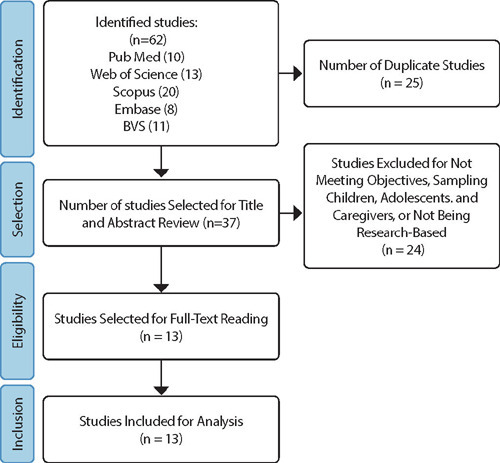
-
ARTÍCULO ORIGINAL30/08/2024
Risk of smoking cessation treatment dropout: a cohort to help (re)think care
Revista Brasileira de Enfermagem. 2024;77:e20230537
Resumen
ARTÍCULO ORIGINALRisk of smoking cessation treatment dropout: a cohort to help (re)think care
Revista Brasileira de Enfermagem. 2024;77:e20230537
DOI 10.1590/0034-7167-2023-0537
Visualizações0Ver maisABSTRACT
Objectives:
to evaluate the relative risk of smoking cessation treatment dropout during its intensive phase.
Methods:
a retrospective and quantitative cohort study was developed from the electronic medical records of individuals who started smoking cessation treatment between 2015 and 2019 at a specialty clinic in a city in the interior of São Paulo, Brazil. The relative risk of dropping out of treatment was calculated using the Poisson regression model.
Results:
it was observed that out of the 396 (100.0%) individuals who started the treatment, 109 (27.5%) abandoned it before the end of the intensive phase. For each one-year increase in age, the risk of dropping out of smoking cessation treatment decreased by an average of 2%.
Conclusions:
the risk of dropping out of smoking cessation treatment is higher among younger individuals. It is necessary to rethink the care offered to younger adults to promote the continuity of treatment.

-
30/08/2024
Fatores determinantes para à hesitação vacinal contra a COVID-19 em brasileiros: estudo utilizando modelagem de equações estruturais
Revista Brasileira de Enfermagem. 2024;77:e20240112
Resumen
Fatores determinantes para à hesitação vacinal contra a COVID-19 em brasileiros: estudo utilizando modelagem de equações estruturais
Revista Brasileira de Enfermagem. 2024;77:e20240112
DOI 10.1590/0034-7167-2024-0112
Visualizações0Ver maisRESUMEN
Objetivos:
investigar los factores que influyen en la vacilación ante la vacuna contra la COVID-19 entre los brasileños.
Métodos:
esta investigación empleó un enfoque observacional y analítico, utilizando una encuesta en línea. La recolección de datos se llevó a cabo en 2020 y el análisis de los datos se realizó utilizando el modelado de ecuaciones estructurales.
Resultados:
la prevalencia de la vacilación ante la vacuna fue del 27,5% (1182 individuos). Existe una correlación negativa entre la creencia en teorías de conspiración y la influencia social. Entre las diversas creencias asociadas con las intenciones de vacunación, solo las creencias en conspiraciones mostraron un valor predictivo significativo. Así, los resultados sugieren que las creencias personales impactan significativamente la vacilación ante la vacunación y también indican que la confianza en los órganos gubernamentales está inversamente relacionada con la vacilación.
Conclusiones:
la vacilación ante la vacuna emerge como un fenómeno multifacético influenciado por una amplia gama de factores, incluyendo las creencias personales, la confianza en los órganos gubernamentales y los sistemas de salud.
-
ARTÍCULO ORIGINAL30/08/2024
Factors associated with university students’ knowledge about HIV and pre- and post-exposure prophylaxis
Revista Brasileira de Enfermagem. 2024;77:e20240092
Resumen
ARTÍCULO ORIGINALFactors associated with university students’ knowledge about HIV and pre- and post-exposure prophylaxis
Revista Brasileira de Enfermagem. 2024;77:e20240092
DOI 10.1590/0034-7167-2024-0092
Visualizações0Ver maisABSTRACT
Objectives:
to analyze the factors associated with university students’ knowledge about HIV and pre- and post-exposure prophylaxis.
Methods:
a cross-sectional study was conducted with 503 university students from a southern state in Brazil; data were collected using a characterization tool and a questionnaire containing 16 statements about the topic; descriptive measures and Poisson regression models with robust variance were used for analysis.
Results:
the prevalence of adequate knowledge (i.e., scoring more than 12 correct answers) was 27.83%; students older than 24 years, enrolled in health-related courses, who had not engaged in sexual relations in the last quarter, with a history of rapid HIV testing, and who knew or had heard about the prophylaxes showed a higher likelihood of scoring more than 12 correct answers.
Conclusions:
generally, the knowledge of young people about HIV and its prophylaxes was found to be inadequate and influenced by sociodemographic, educational, and behavioral factors.
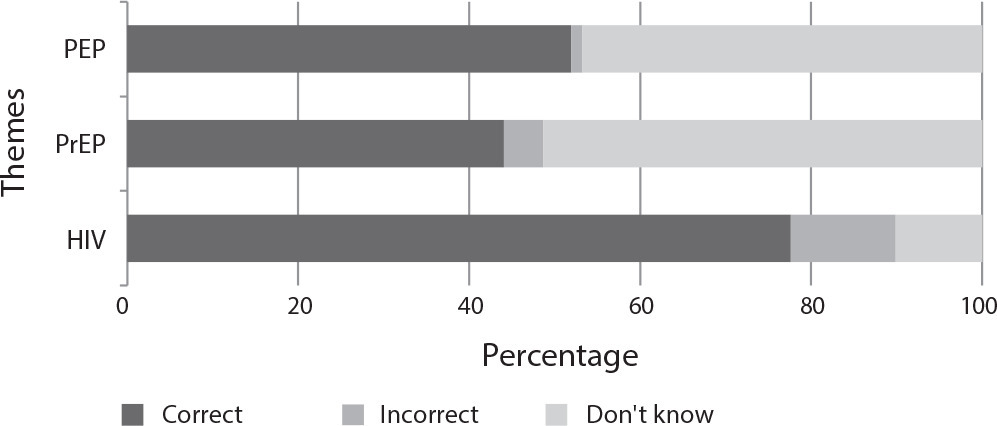
-
ARTÍCULO ORIGINAL09/04/2020
High-risk areas of leprosy in Brazil between 2001-2015
Revista Brasileira de Enfermagem. 2020;73(3):e20180583
Resumen
ARTÍCULO ORIGINALHigh-risk areas of leprosy in Brazil between 2001-2015
Revista Brasileira de Enfermagem. 2020;73(3):e20180583
DOI 10.1590/0034-7167-2018-0583
Visualizações0Ver maisABSTRACT
Objectives:
to identify high-risk areas of leprosy in Brazil from 2001 to 2015.
Methods:
this is an ecological study of spatial analysis based on Brazilian municipalities. Spatial scan statistics were used to identify spatial clustering and measure the relative risk from the annual detection rate of new cases of leprosy. By criterion based on the Gini index, only secondary clusters were considered.
Results:
spatial scan statistics detected 26 clusters, in which the detection rate was 59.19 cases per 100 thousand inhabitants, while in the remainder of the country it was 11.76. Large part of the cluster area is located in the Legal Amazon. These groups included only 21.34% of the total population, but 60.40% of the new cases of the disease.
Conclusions:
Leprosy remains concentrated in some areas, showing the need for control programs to intensify actions in these municipalities.
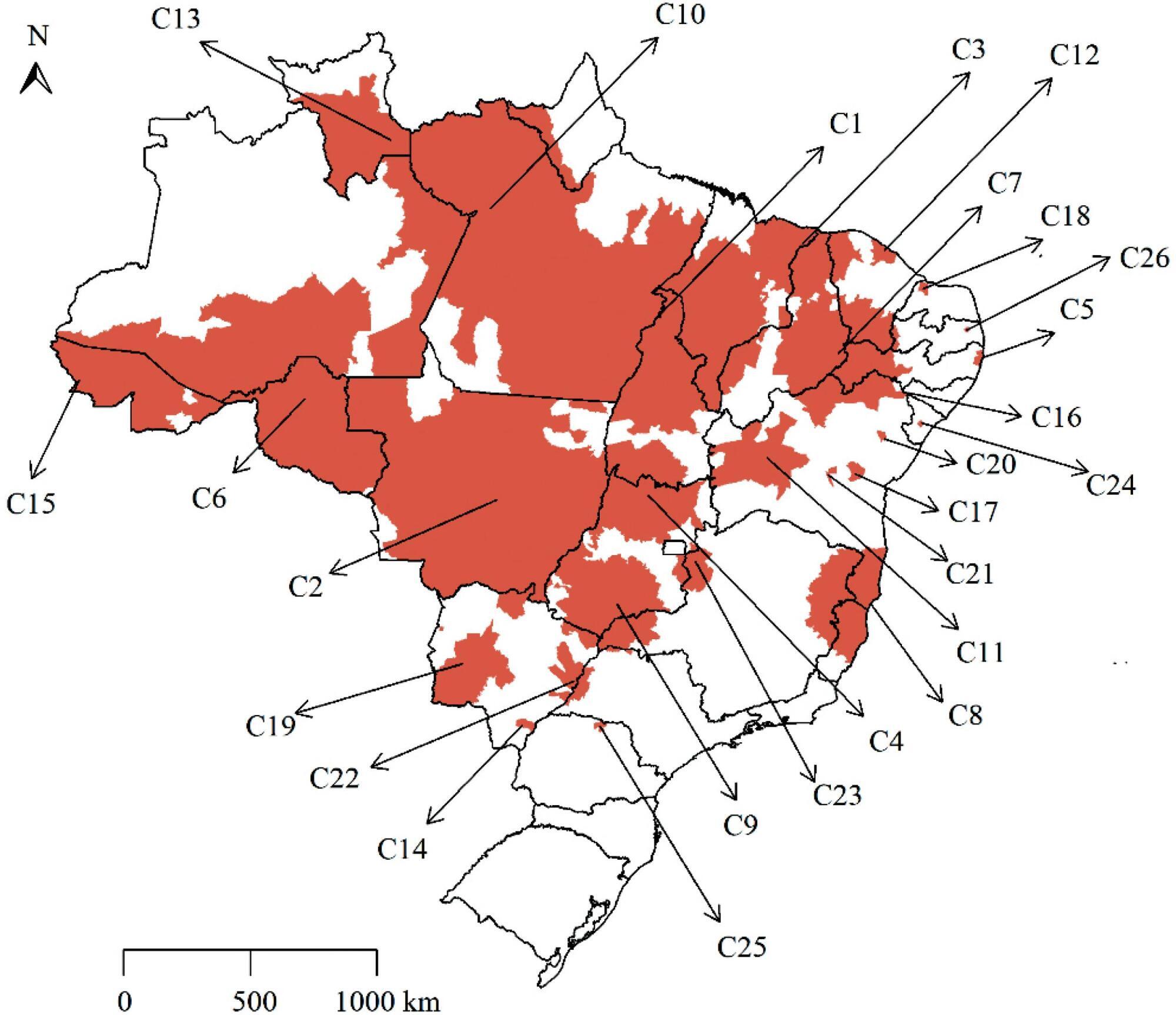
-
PESQUISA24/01/2017
O enfermeiro no mercado de trabalho: inserção, competências e habilidades
Revista Brasileira de Enfermagem. 2017;70(6):1220-1226
Resumen
PESQUISAO enfermeiro no mercado de trabalho: inserção, competências e habilidades
Revista Brasileira de Enfermagem. 2017;70(6):1220-1226
DOI 10.1590/0034-7167-2016-0061
Visualizações1Ver maisRESUMO
Objetivo:
caracterizar enfermeiros egressos da Escola de Enfermagem da Universidade de São Paulo (EEUSP), período de 2006 a 2012; verificar a inserção, as facilidades e dificuldades desses egressos no mercado de trabalho e apreender suas habilidades e competências no mundo do trabalho.
Método:
estudo exploratório, descritivo, de natureza quantitativa.
Resultados:
dos 505 egressos, 172 (34,1%) participaram da pesquisa. A inserção no mercado de trabalho se deu majoritariamente em instituições hospitalares públicas, na região Sudeste, na área da assistência. A maior parte permaneceu nos primeiros empregos de um a dois anos. A maioria concordou que foi preparada para o atendimento às necessidades de saúde da população, que foi estimulada a buscar aperfeiçoamento sistemático e contínuo, de forma crítica, reflexiva e criativa, aliando conhecimento técnico-científico e habilidades pessoais.
Conclusão:
os resultados evidenciam que a EEUSP vem preparando enfermeiros para atuar no mundo do trabalho, conforme preceitos das Diretrizes Curriculares Nacionais.
-
ARTÍCULO DE REVISIÓN16/04/2021
Resultados clínicos da navegação de pacientes realizada por enfermeiros no cenário da oncologia: revisão integrativa
Revista Brasileira de Enfermagem. 2021;74(2):e20190804
Resumen
ARTÍCULO DE REVISIÓNResultados clínicos da navegação de pacientes realizada por enfermeiros no cenário da oncologia: revisão integrativa
Revista Brasileira de Enfermagem. 2021;74(2):e20190804
DOI 10.1590/0034-7167-2019-0804
Visualizações0RESUMO
Objetivo:
evidenciar os resultados clínicos da navegação realizada por enfermeiros no paciente com câncer.
Métodos:
revisão integrativa da literatura, com coleta nas bases de dados MEDLINE via PUBMED, LILACS, Web of Science, Scopus e CINAHL. A amostra final foi composta por sete estudos. Os dados foram analisados e apresentados descritivamente. Dados relacionados aos resultados clínicos foram compilados e descritos na íntegra. Utilizou-se a categorização da Agency for Healthcare Research and Quality para avaliação do nível de evidência.
Resultados:
os resultados clínicos demonstrados foram diminuição do sofrimento, ansiedade e depressão, melhora no controle e manejo dos sintomas, melhora no condicionamento físico, melhora na qualidade e continuidade dos cuidados, melhora na qualidade de vida, redução do tempo para o início do tratamento.
Considerações finais:
hápesquisas que evidenciam melhores resultados clínicos no paciente com câncer por meio da realização da navegação pelo enfermeiro em todo o continuum de assistência à saúde.
Palavras-chave: Avaliação de Resultados (Cuidados de Saúde)Enfermagem Baseada em EvidênciasEnfermagem OncológicaNavegação de PacientesResultado do TratamentoVer mais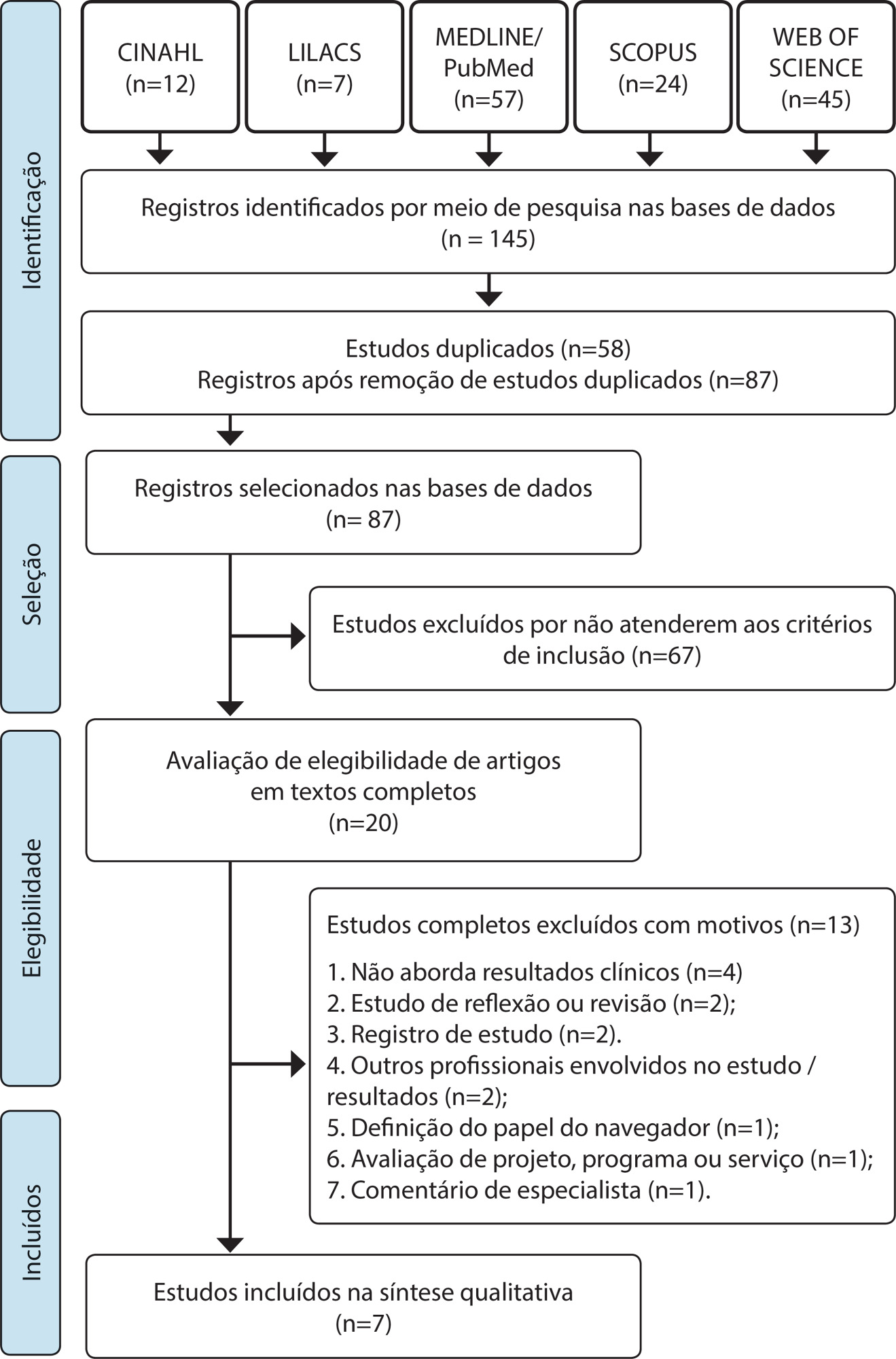
-
ARTÍCULO DE REVISIÓN30/09/2020
Telenursing in care, education and management in Latin America and the Caribbean: an integrative review
Revista Brasileira de Enfermagem. 2020;73:e20190317
Resumen
ARTÍCULO DE REVISIÓNTelenursing in care, education and management in Latin America and the Caribbean: an integrative review
Revista Brasileira de Enfermagem. 2020;73:e20190317
DOI 10.1590/0034-7167-2019-0317
Visualizações0Ver maisABSTRACT
Objective:
Analyze the knowledge generated about telenursing related to the roles of nurses (care, education and management) in Latin America and the Caribbean, based on scientific evidence.
Methods:
Integrative review, for the years 2009 to 2019, in scientific databases from Latin America and the Caribbean. Twelve articles were selected.
Results:
Nine studies focused on care and three on education. The information and communication technology used in the studies was telephony directed toward non-communicable diseases. There were concerns about the remote communication process. With respect to education, two focused on educating health teams and one on educating patients.
Conclusion:
It is necessary to conduct studies on telenursing that generate changes in care practices, explore information and communication technology resources and provide communication training focused on this new care model.
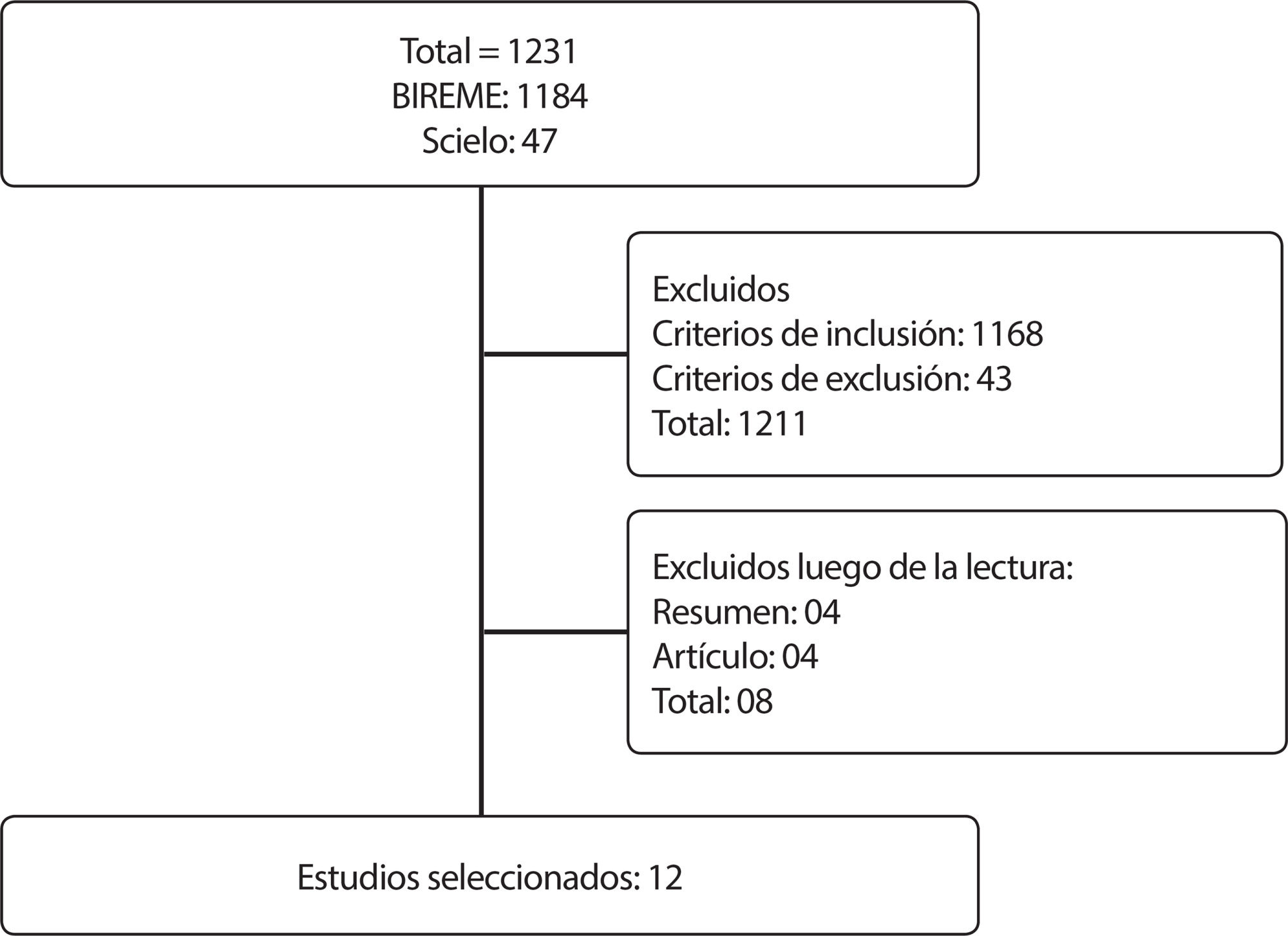
-
ARTÍCULO ORIGINAL13/12/2019
Perceptions and expectations of pregnant women about the type of birth
Revista Brasileira de Enfermagem. 2019;72:41-49
Resumen
ARTÍCULO ORIGINALPerceptions and expectations of pregnant women about the type of birth
Revista Brasileira de Enfermagem. 2019;72:41-49
DOI 10.1590/0034-7167-2017-0731
Visualizações0Ver maisABSTRACT
Objective:
to understand the perceptions and expectations of pregnant women about the type of birth.
Method:
this is a qualitative research, based on the assumptions of the Humanization of Obstetric Care. 15 pregnant women were interviewed twice at the beginning and the end of gestation between October 2015 and May 2016. Data were analyzed according to the method of the Discourse of the Collective Subject.
Results:
the discourses were associated with four themes: Advantages of vaginal birth over cesarean section; Fear and unpredictability of vaginal birth; Importance of the doctor in the definition of the type of birth; and Influence of family and friends in choosing the type of birth.
Final considerations:
according to pregnant women, vaginal birth has more benefit compared to cesarean section. However, during gestation and birth, fear of pain and the unexpected, and medical opinions of friends and family against vaginal birth strongly influence the choice of cesarean section.
-
ARTÍCULO ORIGINAL21/10/2019
Habilidade de cuidado, sobrecarga, estresse e coping de cuidadores familiares de pessoas em tratamento oncológico
Revista Brasileira de Enfermagem. 2019;72(6):1541-1546
Resumen
ARTÍCULO ORIGINALHabilidade de cuidado, sobrecarga, estresse e coping de cuidadores familiares de pessoas em tratamento oncológico
Revista Brasileira de Enfermagem. 2019;72(6):1541-1546
DOI 10.1590/0034-7167-2018-0605
Visualizações0Ver maisRESUMO
Objetivo:
Analisar a associação entre habilidade de cuidado e sobrecarga, estresse e coping de cuidadores familiares de pessoas em tratamento oncológico.
Método:
Estudo transversal com 132 cuidadores familiares. Foram aplicados o instrumento de caracterização, o Caring Ability Inventory, a Escala de sobrecarga de Zarit, a Escala de estresse percebido e COPE Breve. Utilizou-se a Correlação de Spearman com significância ≤5%.
Resultados:
Houve correlações significativas e positivas entre habilidade de cuidado total e: sobrecarga – relação interpessoal (p=0,03); estresse (p=0,02) e coping desadaptativo p=0,00); e correlação inversamente proporcional com coping focado no problema (p=0,03). A coragem teve correlação inversamente proporcional com: autoeficácia (p=0,03), relacionamento interpessoal (p=0,00), estresse (p=0,04) e coping desadaptativo (p=0,00). O conhecimento teve correlação positiva e significativa com coping focado no problema (p=0,00), coping adaptativo (p=0,01), e correlação inversa com estresse (p=0,02).
Conclusão:
o nível de habilidade de cuidado tem correlação com os níveis de sobrecarga e estresse, e com o tipo de estratégia de enfrentamento utilizada pelos cuidadores familiares.
-
ARTÍCULO ORIGINAL19/08/2019
Interrupções e carga de trabalho de enfermagem durante a administração de medicamentos
Revista Brasileira de Enfermagem. 2019;72(4):1001-1006
Resumen
ARTÍCULO ORIGINALInterrupções e carga de trabalho de enfermagem durante a administração de medicamentos
Revista Brasileira de Enfermagem. 2019;72(4):1001-1006
DOI 10.1590/0034-7167-2018-0680
Visualizações0RESUMO
Objetivo:
Investigar fontes e causas das interrupções durante o processo de administração de medicamentos realizado pela equipe de enfermagem e mensurar sua frequência, duração e impacto sobre a carga de trabalho.
Métodos:
Observacional com tempos cronometrados durante 121 rodadas de medicação (preparo, administração e documentação) realizadas por 15 enfermeiros e nove técnicos de enfermagem em Unidade de Terapia Intensiva Neonatal no interior de São Paulo.
Resultados:
Foram observadas 63 (52,1%) interrupções. Em cada rodada, ocorreram de 1-7totalizando 127, principalmente na fase de preparo, 97 (76,4%). As principais fontes constituíram-se em: equipe de enfermagem − 48 (37,8%) − e autointerrupções − 29(22,8%). Já as principais causas: troca de informações – 54 (42,5%) − e conversa paralela – 28 (22%). O aumento do tempo médio variou de 53,7 a 64,3% (preparo) e de 18,3 a 19,2% (administração) p≤0,05.
Conclusão:
Interrupções no processo medicamentoso são frequentes, interferem na carga de trabalho da enfermagem e podem refletir na segurança do cuidado.
Palavras-chave: Carga de TrabalhoCuidados de EnfermagemFluxo de TrabalhoGerenciamento do TempoSegurança do PacienteVer mais -
ARTÍCULO ORIGINAL29/06/2020
Equipamento de Proteção Individual na pandemia por coronavírus: treinamento com Prática Deliberada em Ciclos Rápidos
Revista Brasileira de Enfermagem. 2020;73:e20200303
Resumen
ARTÍCULO ORIGINALEquipamento de Proteção Individual na pandemia por coronavírus: treinamento com Prática Deliberada em Ciclos Rápidos
Revista Brasileira de Enfermagem. 2020;73:e20200303
DOI 10.1590/0034-7167-2020-0303
Visualizações0RESUMO
Objetivo:
discutir a aplicação da Prática Deliberada em Ciclos Rápidos para o treinamento de paramentação e desparamentação no contexto da COVID-19 e estruturar um guia prático para a aplicação nesta conjuntura.
Métodos:
estudo metodológico que descreve aspectos teóricos e práticos da aplicação de uma estratégia de simulação na qualidade de ferramenta tecnológica de treinamento. Um guia de aplicação foi construído a partir da busca de evidências provenientes dos principais órgãos de autoridade em saúde do Brasil.
Resultados:
maximização do tempo em Prática Deliberada, feedback com evidência e segurança psicológica são os princípios desta estratégia. A dinâmica envolve repetições e feedbacks. O guia de aplicação apresenta a sequência de ações para paramentação e desparamentação.
Considerações finais:
o enfrentamento desta pandemia requer uso apropriado de Equipamento de Proteção Individual. Os autores sugerem a Prática Deliberada em Ciclos Rápidos como ferramenta educacional tecnológica para paramentação/desparamentação, visto que incentiva uma performance com maestria.
Palavras-chave: Contenção de Riscos BiológicosCoronavírusEquipamento de Proteção IndividualPandemiaTreinamento por SimulaçãoVer mais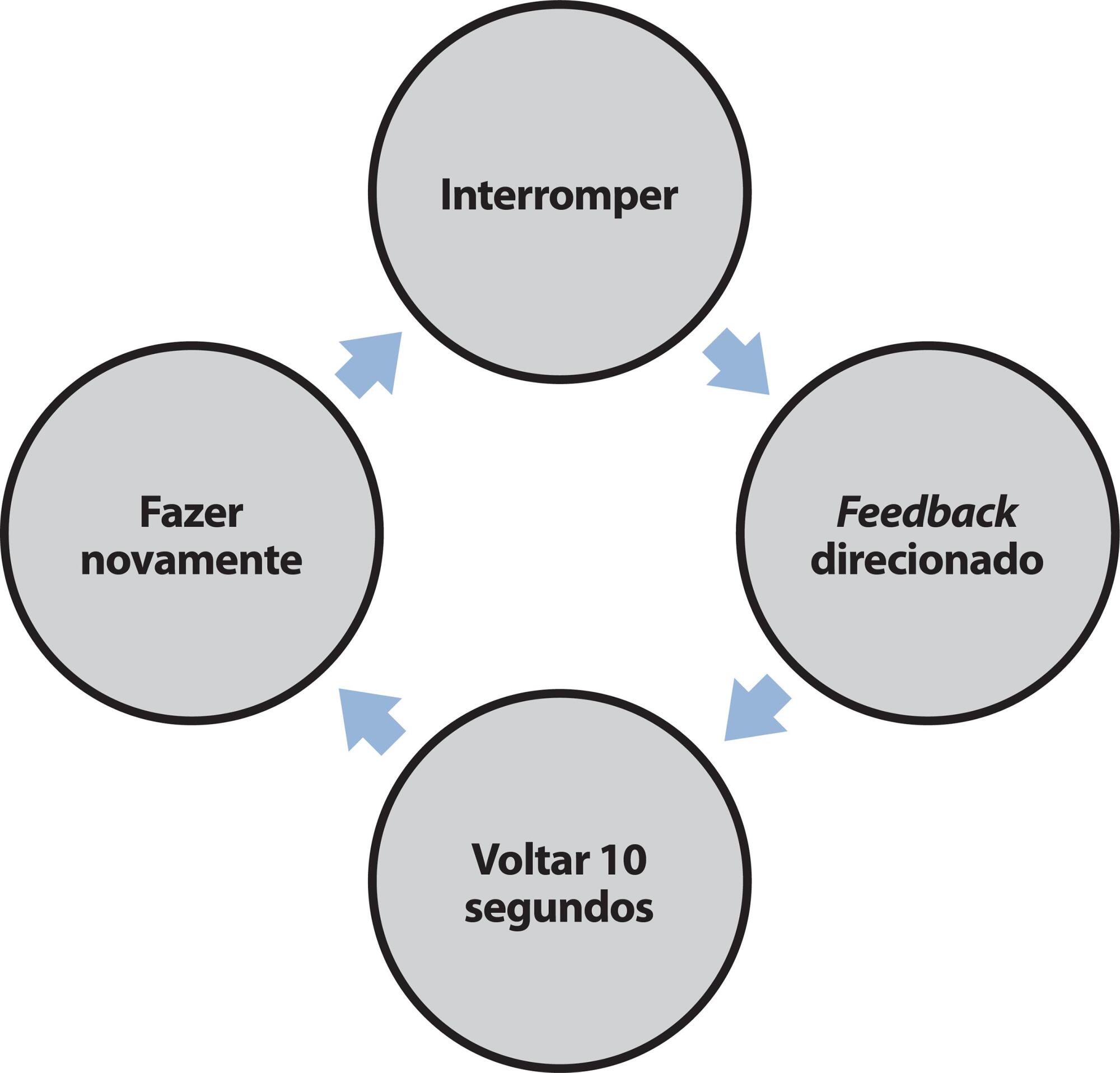
Búsqueda
Buscar en:
Nuvem de Tags
Adolescente (85) Atenção Primária à Saúde (239) COVID-19 (91) Criança (91) Cuidados de Enfermagem (269) Educação em Enfermagem (151) Educação em Saúde (139) Enfermagem (930) Enfermagem Pediátrica (86) Estudantes de Enfermagem (77) Estudos de Validação (131) Família (87) Idoso (208) Promoção da Saúde (99) Qualidade de Vida (104) Saúde do Trabalhador (86) Saúde Mental (145) Saúde Pública (82) Segurança do Paciente (150) Tecnologia Educacional (100)



